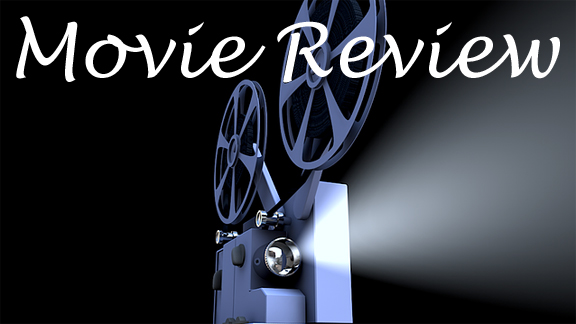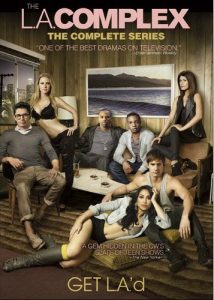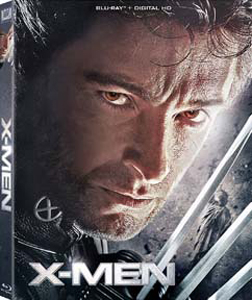Having boned up on the formative years of Xavier, Magneto and Mystique (“X-Men: First Class”), and Wolverine, Sabretooth and (briefly) Cyclops (“X-Men Origins: Wolverine”), we arrive at the movie that started it all, 2000’s “X-Men.” It’s the first of four straight movies that take place more or less in the same year as their release date (“X-Men” is in “the not-too-distant future,” if you want to get picky). So there’s no timeline confusion in that sense, although there are still plenty of juicy continuity oddities that I’ll get to in a bit …
THE STORY
For 15 years, the amnesiac Wolverine has been moping around Canada, irked by vague flashes of the painful adamantium-grafting procedure while making a few bucks by winning amateur cage matches in backwater bars. The tough-yet-fragile teenager Rogue (Anna Paquin), who sucks out people’s life essences with a mere touch, brings out the ol’ softie in Logan and they both find a home at Xavier’s school.
By reading between the lines of Xavier’s exposition, we learn that there are some gaps in the backstory of his friendship/philosophical clash with Erik: Erik apparently was a good guy again in (presumably) the 1980s, when he helped Charles re-open the school and build a new Cerebro. We meet Xavier’s grown-up first class from this new school, now teachers – Jean Grey, Cyclops and Storm – and see the first full-on showdown between Xavier’s and Magneto’s forces.

“X-Men” (2000)
Director: Bryan Singer
Writers: Tom DeSanto, Bryan Singer, David Hayter
Stars: Patrick Stewart, Hugh Jackman, Ian McKellen
BEST GOOD GUY MUTANT
Rogue. Hers is a metaphor-laden teen tragedy: The first boy she kisses goes into a coma for three weeks and she runs away from her Mississippi home into the wilds of Alberta. The pathos is played up more in the “X-Men” novelization by Kristine Kathryn Rusch and Dean Wesley Smith (where Rogue is in an even rougher spot in the bar scene, captive of truckers who aim to rape and kill her), but the wonderful Anna Paquin brings out Rogue’s fears and insecurities in the more stylized film. Her story is the teen-drama answer to Logan’s more epic tragic yarn as spelled out in “Origins: Wolverine,” and that’s why their connection is so touching.
BEST BAD GUY MUTANT
Magneto. On this chronological rewatch, we had seen Patrick Stewart’s Xavier at the end of “Origins: Wolverine,” but this is our first dose of Ian McKellen, whose performance flows perfectly from what Michael Fassbender delivered in the prequels. Magneto is the gold standard of principled villainy that is the trademark of this franchise, where you won’t find much mustache-twirling or evil cackling.
He’s always honest: I love it when Rogue asks if he’s going to kill her and Magneto simply says “Yes.” And while I don’t agree with his schemes in “X-Men” (initially he wants to turn people into mutants, but ultimately he’s OK if they die in the process), he’s a sympathetic character since he grew up under the Nazi boot.

WORST MUTANT
Toad. I don’t dislike any of the mutants in this movie, but it’s obvious that Toad falls flatter than others. We’d learn the backstories of Mystique and Sabretooth in the prequels, whereas Toad just gets a cameo in “Days of Future Past.” While he has his uses – the hardening spit wads are effective, if gross, weapons – he’s not as crucial to Magneto’s scheme as the strong Sabretooth and shapeshifting Mystique.
He could’ve theoretically survived Storm’s lightning strike, but he couldn’t survive fans’ apathy and he didn’t appear in any sequels. While “X-Men” is more respected than 1999’s “Star Wars: Episode I,” Ray Park is much more revered for playing Darth Maul than Toad. (Toad doesn’t have that much less screen time than Maul, and I think he gets more lines.)
BEST NON-MUTANT
Senator Robert Kelly. Played by solid character actor Bruce Davison, Kelly embodies the conflict that brings out the militant side of Magneto. Using his influence in D.C. and appealing to the fears of the populace, Kelly aims to pass the Mutant Registration Act, which reminds Magneto a bit too much of Nazi Germany. When Magneto’s machine mutates this bigoted politician into a literal slime ball (he melts to death), it’s oh so appropriate.
MOST UNDERUSED MUTANT
Beast. I know he’s not in the movie at all, but that’s why I’m picking him for “most underused.” Even when “X-Men” was released, fans missed Beast, who was one of Xavier’s original students in the comics (The others were Cyclops, Jean Grey, Iceman and Angel. Iceman has a small role in this film as Rogue’s love interest, and the winged Angel will appear later in the series.). From the perspective of someone watching these movies chronologically, it’s odd that Xavier does not mention Hank, since he designed the original Cerebro in “First Class” and was the only friend to stick by him during his self-loathing phase between 1963 and ’72.
CONTINUITY NOTES AND ODDITIES
As noted, we can read between the lines and figure out that old friends Xavier and Magneto had their ups and downs through the decades, and one of the up moments was building a new Cerebro and re-opening the school, presumably in the 1980s, not long before the events of “Origins: Wolverine.” Beast’s absence in “X-Men” is a mystery, although if we do some extreme between-the-lines reading, we might guess that he’s off somewhere struggling with his mutation. He’ll return later in the saga, so maybe we’ll get some answers then.
Xavier tells Logan he met Erik when he was 17. But they are actually in their 30s in “First Class.” “X-Men” director Bryan Singer, a producer on “First Class,” expressed regret that he specifically had Xavier say “17.” Xavier’s dialog about meeting Erik in the novelization (page 79), presumably based on an earlier draft, does it better: “More years ago than I care to think about.” The “17” reference probably has to be categorized as a continuity error, although it’s plausible that Charles could’ve briefly met Erik when he was 17.
“X-Men” opens the same way as “First Class,” with a flashback to Erik’s parents being hauled away by Nazis to a concentration camp and his powers manifesting when he bends a metal gate. Had these movies been made in order, “X-Men” probably would’ve given us a more recent flashback of what Magneto has been up to.
Wolverine doesn’t remember his brother, Sabretooth, due to his amnesia, and Sabretooth (now played by Tyler Mane) is a lot less talky than in “Origins: Wolverine,” and a lot more animalistic – presumably an effect of his mutation. Nonetheless, there is a palpable sense of rivalry between the two. Indeed, Wolverine’s journey from “Origins: Wolverine” flows smoothly into this movie (note the same leather jacket) and then into “X2.” As for Sabretooth, it seems he could’ve survived that fall, but he won’t appear in the sequels.
The connection between Xavier and Mystique (who, as we know from the prequels, is like a kid sister to him) is underplayed in “X-Men,” but it’s not a huge problem since they don’t share any scenes. The closest interaction is when Xavier reads Kelly’s mind and sees Mystique helping an exhausted Magneto. Charles immediately goes into explaining the mutation machine to his students. This would’ve been a good place for a more lingering shot of a thoughtful Xavier, allowing us to imagine his feelings of regret about drifting away from Raven.
Cyclops joined Xavier’s school at the end of “Origins: Wolverine,” but we don’t get the backstories for Storm or Jean Grey in “X-Men.” Storm’s is in the novelization, though (she was picked on by her classmates in 1988 in Kenya, and her weather-manipulating powers manifested) and we’ll learn more about Jean as the saga moves forward.
We don’t know what happened to the other kids who enrolled at the same time as Scott, such as the diamond-skinned Emma Silverfox. But it makes sense that not every student would go on to become a teacher of mutant kids. Many would go into other careers, and since many mutants look normal (or have the power to look normal, in the case of Mystique), they could assimilate into society.
WHERE IT RANKS
“X-Men” isn’t as much fast-paced fun as “First Class,” but it tells a more manageable story than “Origins: Wolverine,” so I rank it between those two films. It has a comfortable amount of mutants, allowing for the continuation of Wolverine’s arc, a sympathetic new character in Rogue, a handful of other well-cast comic-book favorites, and the continuation of the Magneto-Xavier philosophical clash.
The mutant registration debate at the film’s core unfortunately works better than ever today. It can be read as a metaphor for the institutional persecution of gays, who have made a ton of progress since 2000 in their quest for equal marriage rights, although one powerful senator like Kelly could’ve been a tipping point in a negative direction. Although marriage is a form of governmental registration, “registration” also tends to be in the news in regards to firearm ownership by citizens and other pre-crime governance such as NSA surveillance.
As in “First Class,” I can appreciate both points of view: Xavier patiently waits for people to wake up while Magneto decides he might as well start the war himself, since he views it as inevitable. This time, I sympathize more with Xavier, because Magneto goes from merely changing “normals” into mutants (an extreme enough scheme right there) to being OK with killing millions — including Rogue! That’s a line I won’t let him cross.

